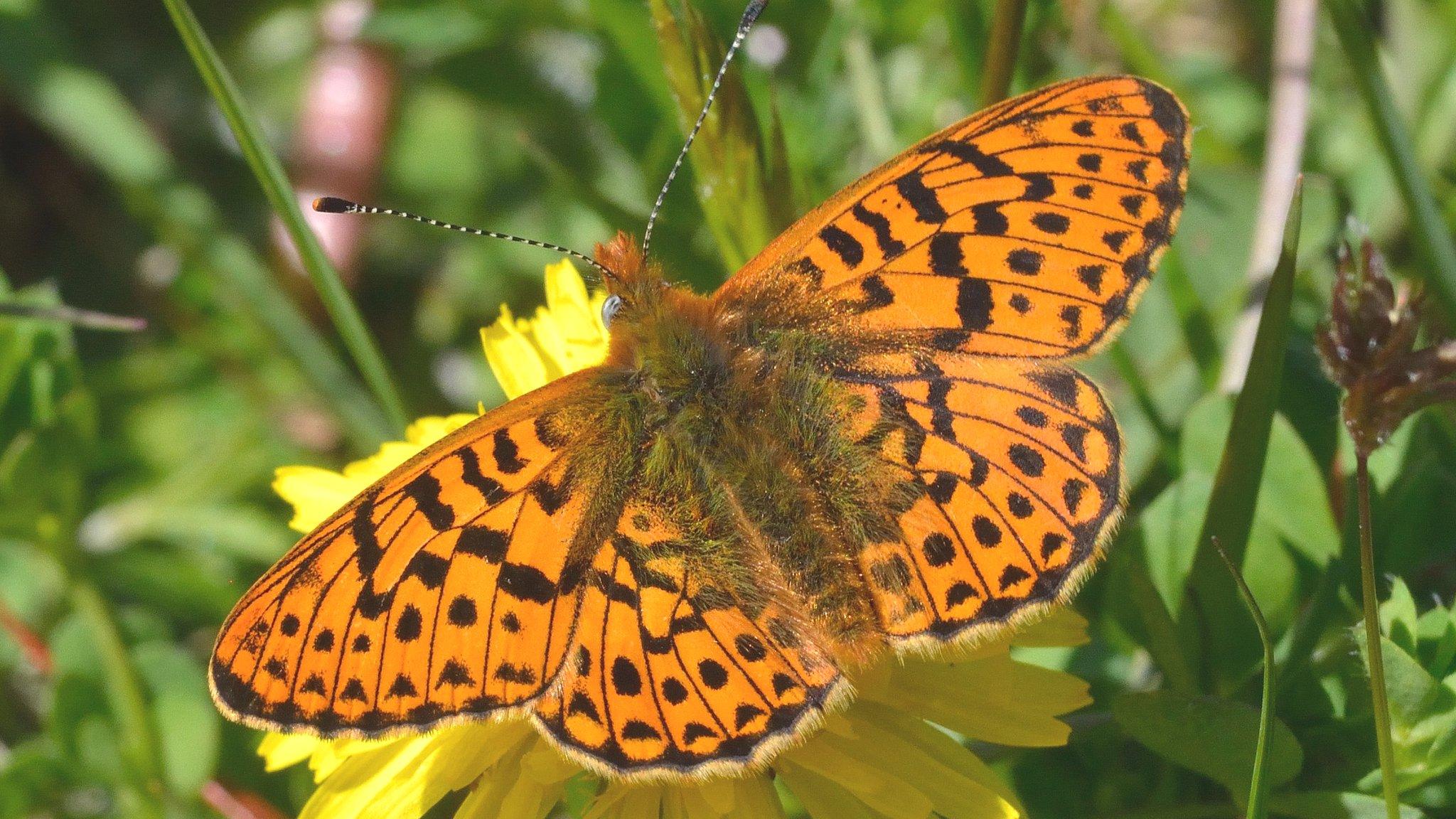'Extinct' giant cattle could be introduced to Highland estate
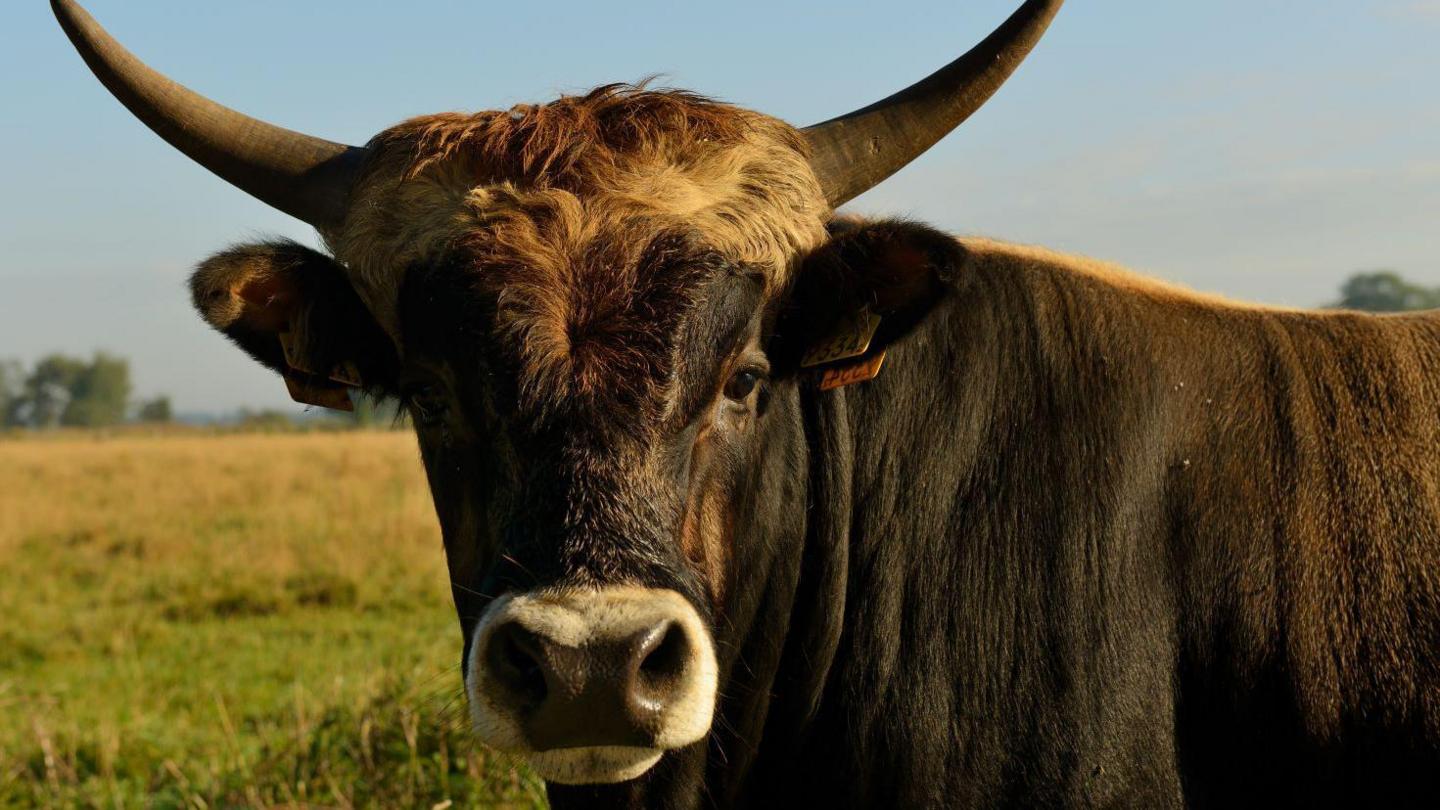
Tauros have been bred to look similar to an ancient breed of cattle
- Published
Cattle bred to resemble aurochs, large wild-roaming cows and bulls that have been extinct for 400 years, could be introduced to an estate near Loch Ness.
Aurochs, external were once found across Europe, including Scotland, before habitat loss and hunting wiped them out in the 17th Century.
Tauros are a cross-breed that look like the ancient beasts.
Findhorn-headquartered Trees for Life has proposed having a herd at its 9,884-acre (4,000 ha) Dundreggan Estate. It would be the first introduction of tauros in the UK.
Tauros bulls can grow to up to 1.8m (6ft) and cows 1.5m (5ft) in height, similar in size to aurochs.
Bulls of Charolais, Limousin and Simmental - some of the breeds farmed in Scotland - grow to between about 1.5m (5ft) and 1.6m (5.2ft).
Organisation Rewilding Portugal has introduced tauros to Côa Valley in north-eastern Portugal, an area which has ancient cave paintings of aurochs.
There are also herds in Czech Republic, Croatia, Spain and Portugal.
Trees for Life hopes to introduce 15 from the Netherlands to its estate south of Inverness in 2026.
It said it was legal to import tauros because they were a cross-breed of cattle, and it was not a reintroduction of a separate species.
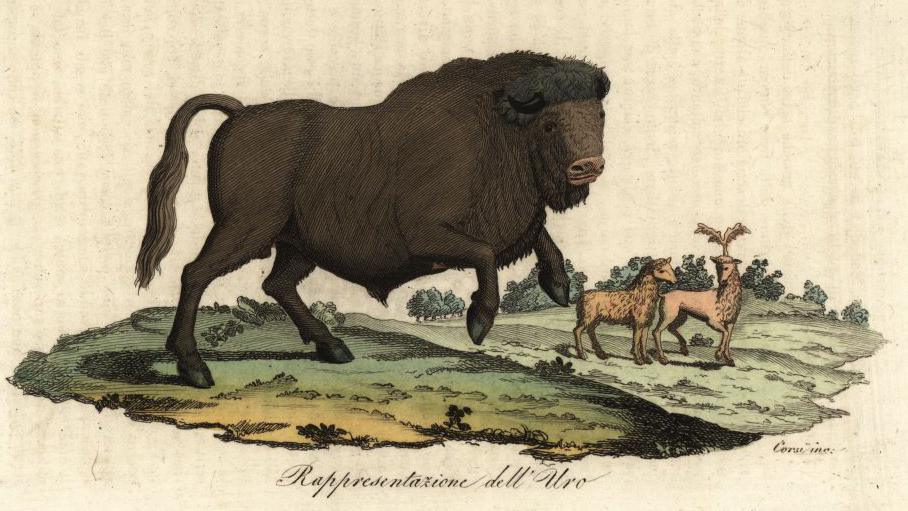
An illustration from 1844 depicting an auroch bull
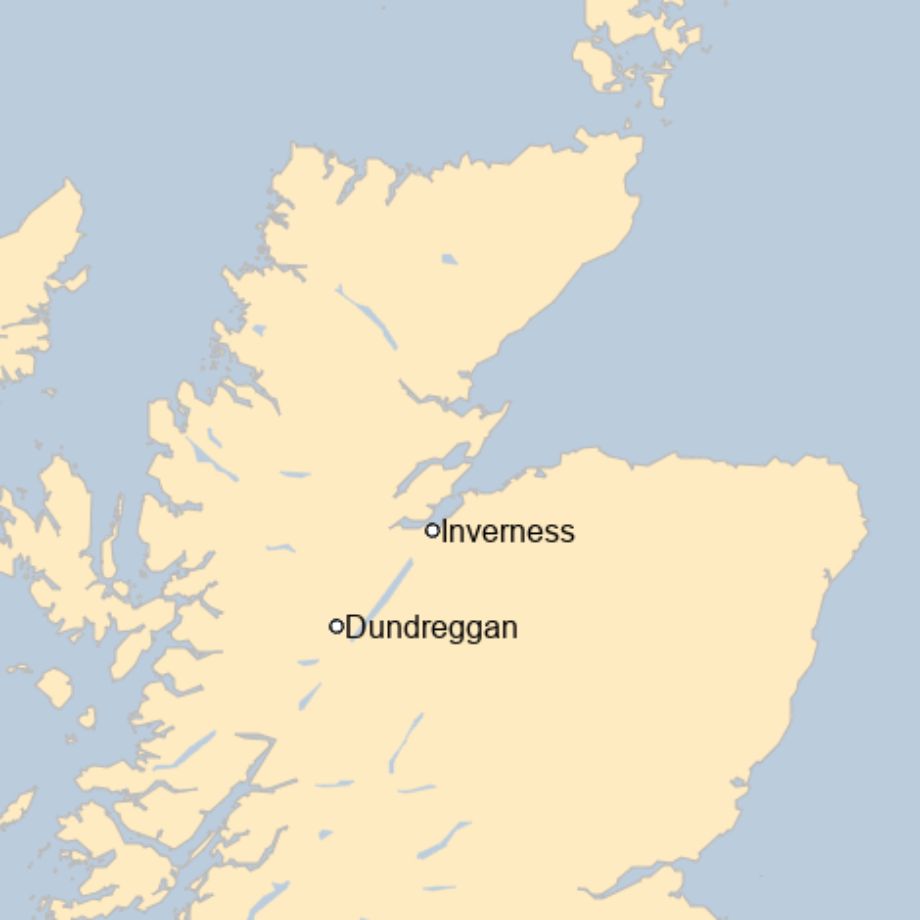
Chief executive Steve Micklewright said the aim of the project was to learn from the past while restoring natural habitats.
He said: "Introducing the aurochs-like tauros to the Highlands four centuries after their wild ancestors were driven to extinction will refill a vital but empty ecological niche – allowing us to study how these remarkable wild cattle can be a powerful ally for tackling the nature and climate emergencies."
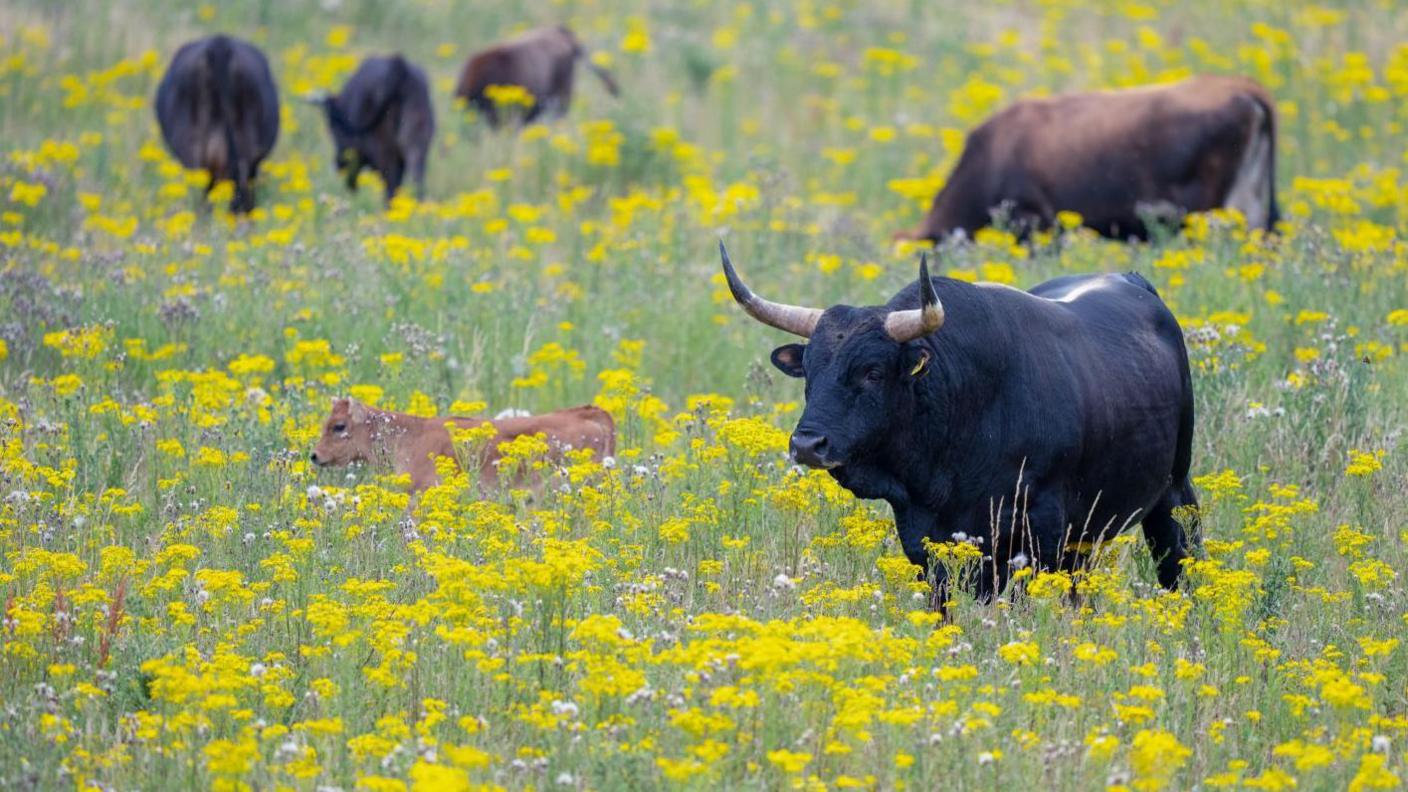
Tauros have been bred to resemble aurochs
Trees for Life said the cattle could boost biodiversity.
Bulls use their hooves and long horns to dig out large bowl-shaped holes in the ground, and often bash their heads against the sides of these depressions to strengthen their neck muscles.
The charity said these "bull pits" formed micro-habitats that could support insects, small mammals, birds and plant life.
It added that tauros dung fertilised soil, and helped insects such as dung beetles.
Trees for Life said the cattle would be safely and carefully managed to protect them from too much human contact.
Mr Micklewright said: "So we all know we have these wonderful Highland coos, and they're wonderful hairy creatures.
"This is something a bit wilder, something a bit bigger. And I think that will bring us a sense of excitement."
The last of auroch died in Poland in 1627.
The cattle have been among extinct animals a team of scientists have looked at potentially bringing back from the dead through advances in genetics.
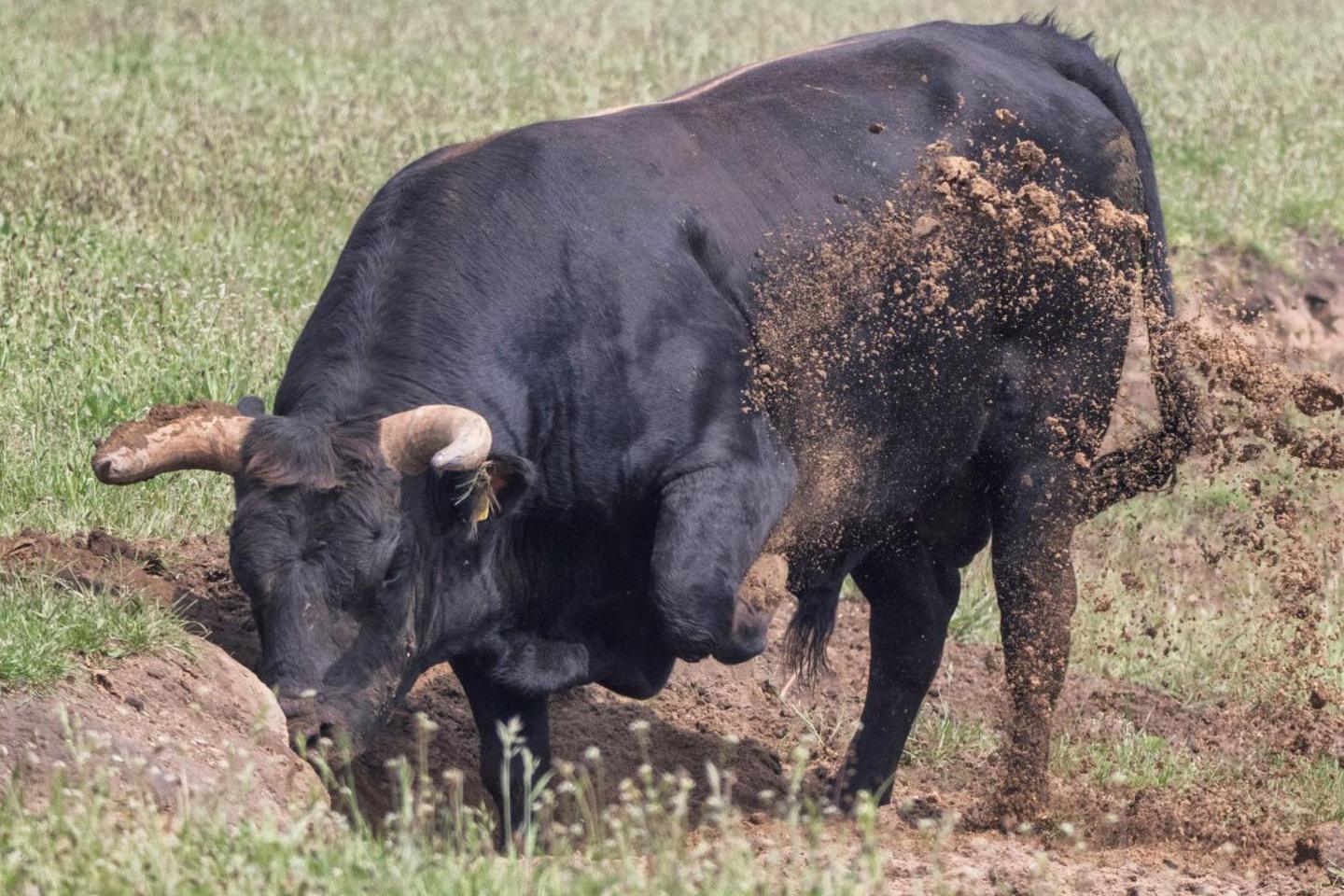
A tauros bull digging out a bull pit
Scotland's nature agency NatureScot said well planned and managed cattle grazing had an increasingly important role in nature restoration.
It said Highland cattle had been used at Abernethy Forest in the Highlands to graze and trample down vegetation to improve habitat for rare birds called capercaillie.
Belted Galloways have also been used in a project to boost numbers of rare pearl-bordered fritillary butterflies at Mabie Forest in Dumfries.
NatureScot said: "We understand the tauros cattle are being released as wild-living farm animals, so we would expect the project to have considered and planned for good conservation outcomes, taking account of biological, social and cultural impacts.
"Although a licence is not required from NatureScot for releasing domestic livestock, the usual legal and welfare regulations for livestock applies."
Related topics
- Published10 March 2024
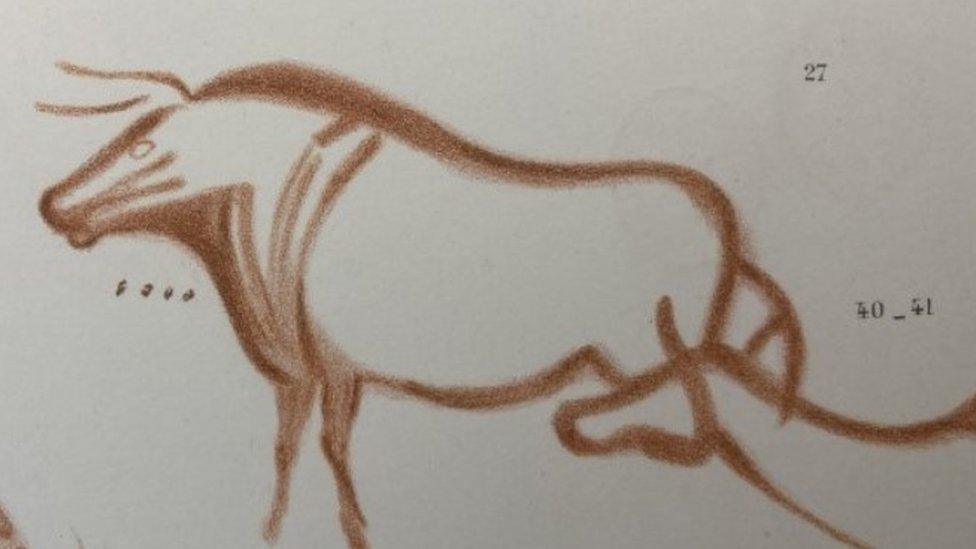
- Published2 June 2022
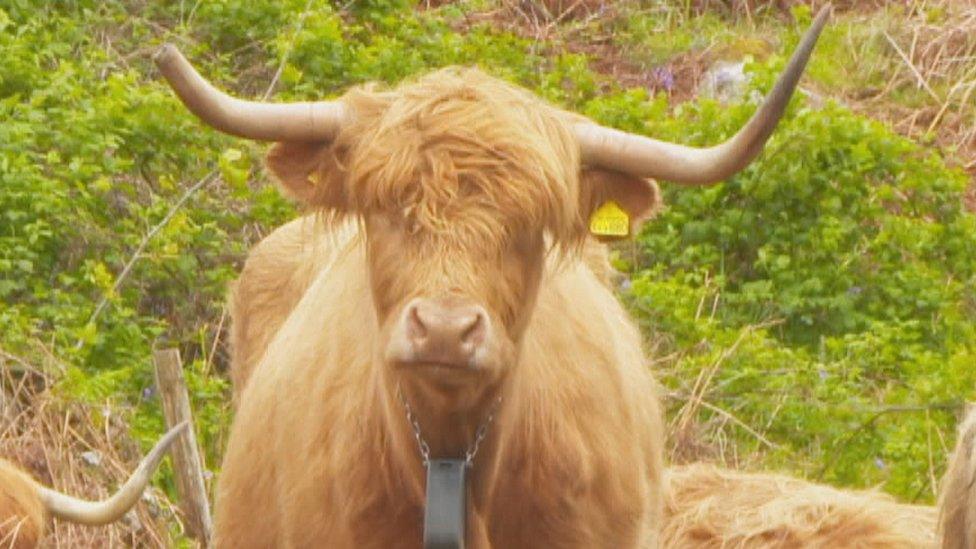
- Published3 July 2021
